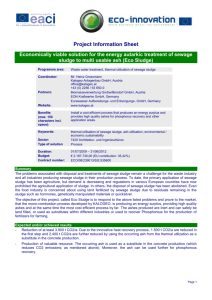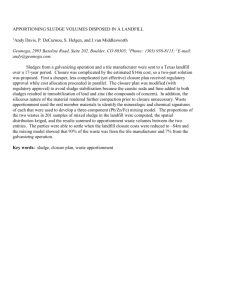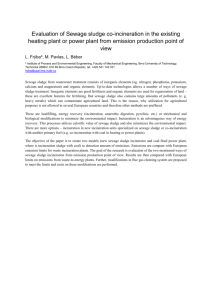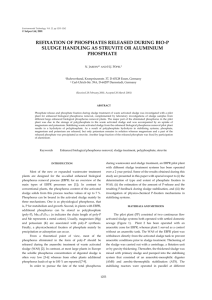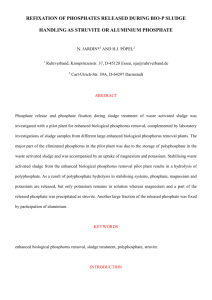Document 7736502
advertisement
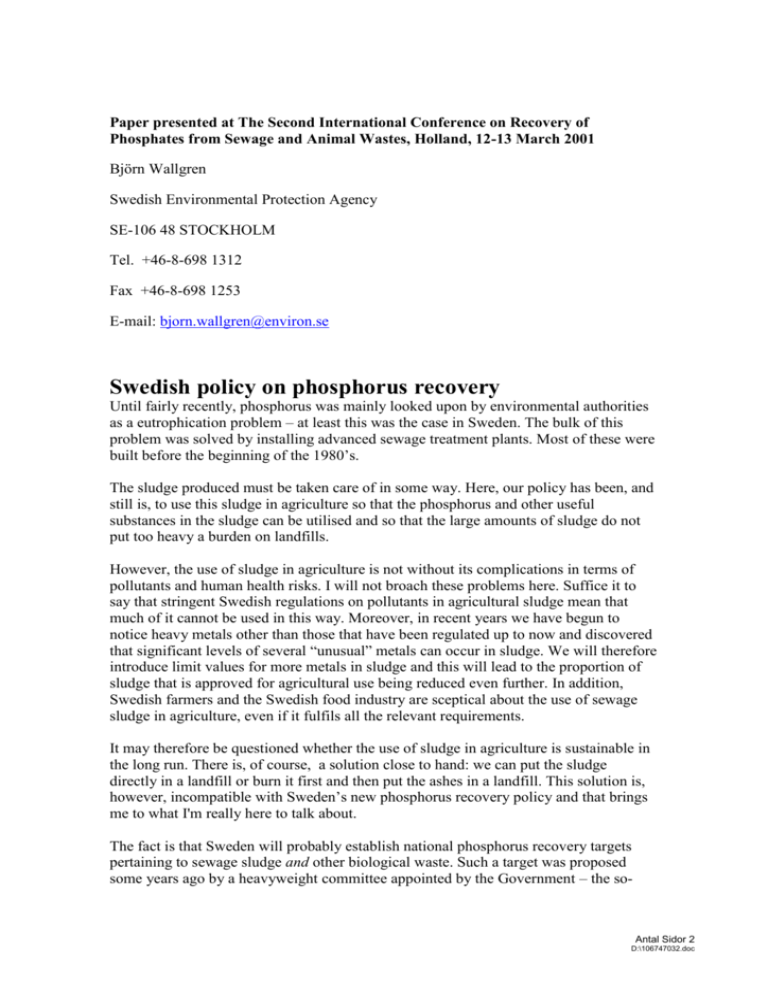
Paper presented at The Second International Conference on Recovery of Phosphates from Sewage and Animal Wastes, Holland, 12-13 March 2001 Björn Wallgren Swedish Environmental Protection Agency SE-106 48 STOCKHOLM Tel. +46-8-698 1312 Fax +46-8-698 1253 E-mail: bjorn.wallgren@environ.se Swedish policy on phosphorus recovery Until fairly recently, phosphorus was mainly looked upon by environmental authorities as a eutrophication problem – at least this was the case in Sweden. The bulk of this problem was solved by installing advanced sewage treatment plants. Most of these were built before the beginning of the 1980’s. The sludge produced must be taken care of in some way. Here, our policy has been, and still is, to use this sludge in agriculture so that the phosphorus and other useful substances in the sludge can be utilised and so that the large amounts of sludge do not put too heavy a burden on landfills. However, the use of sludge in agriculture is not without its complications in terms of pollutants and human health risks. I will not broach these problems here. Suffice it to say that stringent Swedish regulations on pollutants in agricultural sludge mean that much of it cannot be used in this way. Moreover, in recent years we have begun to notice heavy metals other than those that have been regulated up to now and discovered that significant levels of several “unusual” metals can occur in sludge. We will therefore introduce limit values for more metals in sludge and this will lead to the proportion of sludge that is approved for agricultural use being reduced even further. In addition, Swedish farmers and the Swedish food industry are sceptical about the use of sewage sludge in agriculture, even if it fulfils all the relevant requirements. It may therefore be questioned whether the use of sludge in agriculture is sustainable in the long run. There is, of course, a solution close to hand: we can put the sludge directly in a landfill or burn it first and then put the ashes in a landfill. This solution is, however, incompatible with Sweden’s new phosphorus recovery policy and that brings me to what I'm really here to talk about. The fact is that Sweden will probably establish national phosphorus recovery targets pertaining to sewage sludge and other biological waste. Such a target was proposed some years ago by a heavyweight committee appointed by the Government – the so- Antal Sidor 2 D:\106747032.doc 2(2) called Committee on Environmental Objectives. The Committee was charged with the task of bringing more concrete form to the 15 national environmental objectives that had previously been established by the Riksdag. The Committee did this, but also proposed a number of resource management targets, one of which concerned phosphorus recovery. According to the Committee’s proposal, 75 per cent of the phosphorus in waste and drains should be recovered within ten years so that it can be returned to productive soil "without hazard to health and environment".1 The Committee’s proposals have been circulated for comments and been received very positively. Reactions to the proposal for a national phosphorus recovery target were also very positive, but several of those asked to comment, including the Swedish EPA, felt that the target of 75 per cent recovery within ten years was rather overoptimistic. As a result, the Government will probably not propose a target stating a specific deadline and percentage as regards phosphorus recovery. It will instead charge the Swedish EPA with the task of proposing both recovery targets and a strategy for achieving them. As of the beginning of March this year, the EPA has yet to receive this task and I am unable to say at this point what form it will take. The exact wording is of course interesting, but the most important thing is that phosphorus recovery will, for the first time in Swedish history, become a national objective. We are already striving for an increased rate of phosphorus recovery and this is connected with the intention of many municipalities to begin burning their sludge. The stringent regulations governing pollutants in agricultural sludge have, in concert with the resistance of Swedish farmers, led to many municipalities being forced to send their sludge for landfill. As from this year, however, sending waste to landfill has become rather expensive and in 2005 a ban on landfilling sludge or other organic waste will come into force. Many municipalities have therefore applied for permission to burn the sludge. In Sweden, such applications come before the environmental courts. With regard to the applications that have been filed in recent years, the Swedish EPA has demanded that the permission to burn sludge, if granted by the court, should be bound up with a requirement to recover the phosphorus, either by extracting it prior to burning or by recovering it from the ashes. In most of these cases the courts have ruled in that way. The fact that phosphorus conservation is now seen as a national issue obviously sends a powerful message to the whole of society – phosphorus must not just be seen as a substance that causes unwanted fertilisation in the wrong places but first and foremost as the finite and irreplaceable resource it is. If there is one substance we have to learn how to conserve more efficiently, if we are serious about our talk of a sustainable society, phosphorus is indeed that substance! 1 By mistake, the words "and environment" were omitted from the official English translation. D:\106747032.doc

